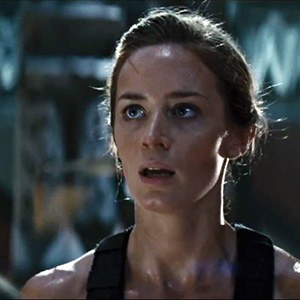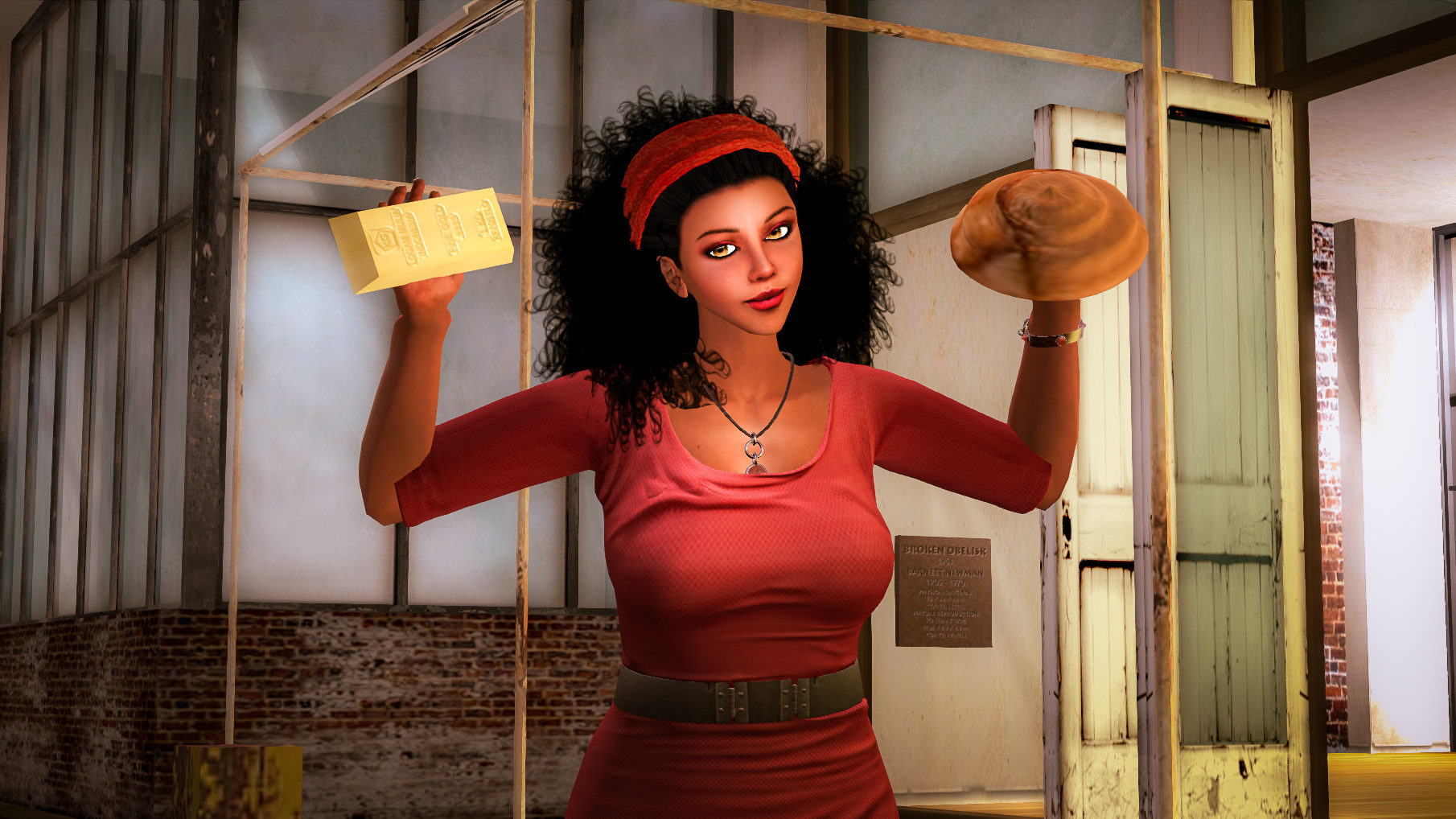It’s been 21 years since Groundhog Day. Emily Blunt was 10 when it was released in 1993. Hollywood loves time travel: The crew of The Enterprise does it all the time, and the late Paul Walker won the girl of his dreams by visiting 1357 and surviving The Hundred Years War in Michael Crichton’s Timeline. In The Butterfly Effect Ashton Kutcher tries to fix things and gets them ever more wrong. Edge of Tomorrow is the 3rd time in 4 years that Hollywood’s injected Blunt into alternate time space, having been preceded by The Adjustment Bureau, 2011 & Looper, 2012.
Emily Blunt, Looper
 But for all the time travel and occasional visits to parallel universes, it’s rare to experience the staccato of the relentless needle-drop as a teenager repeatedly plays her favorite record, each time hearing the same notes as they waft a unique journey through the synapses of her mind. Groundhog Day was a masterpiece of this. Brain damage allowed 50 First Dates to do a sort of time loop without having to alter the laws of physics. And in Edge of Tomorrow we’re treated to one of the most satisfying time loops since Emily Blunt was 10-years-old.
But for all the time travel and occasional visits to parallel universes, it’s rare to experience the staccato of the relentless needle-drop as a teenager repeatedly plays her favorite record, each time hearing the same notes as they waft a unique journey through the synapses of her mind. Groundhog Day was a masterpiece of this. Brain damage allowed 50 First Dates to do a sort of time loop without having to alter the laws of physics. And in Edge of Tomorrow we’re treated to one of the most satisfying time loops since Emily Blunt was 10-years-old.
The Treachery of Time
Death is one of our greatest fears. Most dreaded. Yet most of us only die once, and we don’t care that much about it after the fact. It’s time that’s the true grim reaper: ending relationships, destroying dreams, and dragging what-might-have-been ever further from our fingertips. Death brings a certain peace. Time only taunts us with reminders of what it has taken away. Every child who’s ever watched the astronomy demo of dots on a balloon moving further apart as you blow it up, knows that time relentlessly pulls you further away from life as you once knew it. Death is nothing more than a bit of collateral damage in the horrifically wrong foreign policy that is time.
The Pleasure of Time
 Perhaps this is a part of why films like Edge of Tomorrow and Groundhog Day are so satisfying. Andy Warhol, one of the few people ever to die twice, was fascinated by time. His films, “boring” to some, were a voyeur’s dream. Warhol Screen Tests allowed you the pleasure of experiencing a human face, a human persona, for longer than we ever otherwise get to. In Edge of Tomorrow we have the chance not just to repeat a day and try to get it right, but more, to appreciate it’s cadences and rhythms. In a single day, Emily Blunt would only be, well, blunt. Harsh and tedious. But in the Zen-like depth that repetition takes Tom Cruise’ character to, he comes to find the human beauty in what would otherwise only be harshness. Jonas Mekas once said that Hollywood film was narrative, and Experimental film was poetic. Edge of Tomorrow is narrative cinema to be sure, yet in the iambic pentameter of its flow, we experience a bit of screen poetry.
Perhaps this is a part of why films like Edge of Tomorrow and Groundhog Day are so satisfying. Andy Warhol, one of the few people ever to die twice, was fascinated by time. His films, “boring” to some, were a voyeur’s dream. Warhol Screen Tests allowed you the pleasure of experiencing a human face, a human persona, for longer than we ever otherwise get to. In Edge of Tomorrow we have the chance not just to repeat a day and try to get it right, but more, to appreciate it’s cadences and rhythms. In a single day, Emily Blunt would only be, well, blunt. Harsh and tedious. But in the Zen-like depth that repetition takes Tom Cruise’ character to, he comes to find the human beauty in what would otherwise only be harshness. Jonas Mekas once said that Hollywood film was narrative, and Experimental film was poetic. Edge of Tomorrow is narrative cinema to be sure, yet in the iambic pentameter of its flow, we experience a bit of screen poetry.
The Enemy of Time
 The real “enemy” in Edge of Tomorrow is indeed time. The alien invaders, while overwhelming, are mostly irrelevant. The girl, in linear time, is only a harsh warrior. There’s nothing new in Cruise’ character defeating the invaders or falling in love with the girl, that always happens. What’s compelling about Edge of Tomorrow is Cruise & Blunt’s battle with time. In our chaotic, manic, stressed-out world, Edge of Tomorrow allows us the luxury of playing with time. Of loitering in time. Of savoring time. Of John Cage-like attention to small details.
The real “enemy” in Edge of Tomorrow is indeed time. The alien invaders, while overwhelming, are mostly irrelevant. The girl, in linear time, is only a harsh warrior. There’s nothing new in Cruise’ character defeating the invaders or falling in love with the girl, that always happens. What’s compelling about Edge of Tomorrow is Cruise & Blunt’s battle with time. In our chaotic, manic, stressed-out world, Edge of Tomorrow allows us the luxury of playing with time. Of loitering in time. Of savoring time. Of John Cage-like attention to small details.
The Edge of Tomorrow
Who among us hasn’t wanted a do-over? The chance to walk away from that trap. To say I love you. To get high school right. In MMORPG’s our avatars die all the time. But each “death” gets us a little bit closer to our quest. In Edge of Tomorrow we have that MMORPG-like satisfaction not of dying, but of learning. Of growing. Of coming a little bit closer to our goals.
Our educational system should be more like MMORPGs.
And our lives should be more like Edge of Tomorrow.
- Groundhog Day illustration by Chris Piascik




